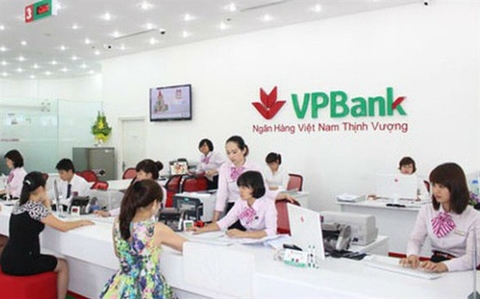
VPBank and Techcombank were two of the most profitable banks in 2020. — Photo nhadautu.vn
The five banks with the highest return on asset and the return on equity in 2020 were all private ones.
Besides, while joint stock banks like VPBank, Techcombank and ACB had assets equivalent to only a third or fourth of that owned by state-owned banks such as Agribank and BIDV, their profits were equal or even higher.
Techcombank and VPBank were two of the most profitable banks in 2020.
Analysts say it is easy to understand why the private joint stock banks have been able to keep up with or even surpass the State-owned lenders.
Analysts say most Vietnamese banks still heavily rely on interest income to earn profits.
Meanwhile, the credit market shares of some private lenders have consistently risen in recent years while State-owned banks have been headed in the opposite direction.
This is based on the firm financial foundation the former have built, which has enabled them to grasp growth opportunities.
State-owned banks own huge assets of VND1,180-1,550 quadrillion each but are unable to increase their capital to meet adequacy norms.
A report by the State Bank of Viet Nam said the four State-owned lenders, Agribank, Vietcombank, Vietinbank, and BIDV, accounted for 41.8 per cent of the banking sector’s total assets as of last June.
But since they have been unable to increase their capital correspondingly, they have been forced to slow down to ensure their capital adequacy ratio (CAR) remains at acceptable levels, which has allowed private lenders to race ahead.
CAR is the ratio of a bank’s capital in relation to its risk-weighted assets and current liabilities. It is decided by central banks and bank regulators to prevent commercial banks from taking excess leverage and becoming insolvent in the process.
Statistics from Viet Dragon Securities Company show that while the State-owned banks still have the largest credit market shares, they have been shrinking somewhat in recent years, while those of private lenders have been on an upward trend.
MB, Techcombank, VPBank, and ACB achieved the highest credit growth rates last year and thus also the highest profit growth.
MB, for instance, achieved credit growth of 23 per cent and made a profit of VND10.69 trillion, an increase of 6.5 per cent from the previous year.
Private banks also have a higher risk appetite and thus invest in corporate bonds and are willing to provide unsecured consumer loans and lend to the property sector, all of which are highly profitable.
In fact, large purchases of corporate bonds in 2020 enabled them to remain afloat when the Covid-19 pandemic was raging and brought the economy to a standstill.
Some major developers have acquired stakes in private banks, which has caused them to increase lending to property companies and, thus, their profits.
Private banks’ cost of funds has gone down substantially in recent times, another factor in improving their profit margin.
This has come about since they have been able to reduce various fees, thus attracting non-term savings.
Efforts to change their customer profile and credit portfolios, adopt new technologies, diversify sources of revenue, and cutting expenses have also helped improve profit margins.
On the other hand, State-owned commercial banks have to compulsorily lend at low interest rates to priority sectors like infrastructure, and have been instructed by the Government to cut interest rates to support businesses affected by the pandemic.
Agribank, for instance, has been carrying out no-profit credit programmes to support rural and agriculture development across the country.
Central bank makes changes to how it allots bank credit quotas
In the past the State Bank of Viet Nam (SBV) would usually set credit growth limits for commercial banks for the year based on their credit growth in the month of December (December 31) of the previous year.
But this year there has been a difference after the central bank allotted credit growth quotas of 3-4 per cent for the first quarter of this year to some banks instead of allocation of credit growth quotas to the lenders for the whole year as it used to do in the past.
This has caused analysts to think the SBV could change the way it allots credit growth quotas this year, possibly by assessing the operations of each bank and its capability to develop credit healthily on a quarterly basis.
What do banking sector insiders say about this?
Nguyen Tuan Anh, director of the credit department at the central bank’s Department of Credit for Economic Sectors, has revealed that the SBV has made two major changes to the way it regulates credit activities by the banking sector.
The central bank has temporarily allocated credit limits for the first quarter of this year to lenders based on which they could implement their lending plans in a timely manner since it needs more time to calculate credit growth targets for the whole banking sector for the whole year.
In other words, it would not allocate the credit growth quotas every three months as is rumoured but the first months of this year only.
The second change is that this year the credit growth quota for a bank will be based on its credit growth for the whole of last year and not just last December.
He has also revealed that this year’s overall credit growth target for the banking sector is likely to be 12 per cent though the central bank would remain flexible and tweak it as necessary.
Dr Can Van Luc, a senior economist, said in the long term the central bank should stop micromanaging lenders’ credit activities and only monitor their capital adequacy instead. —VNS